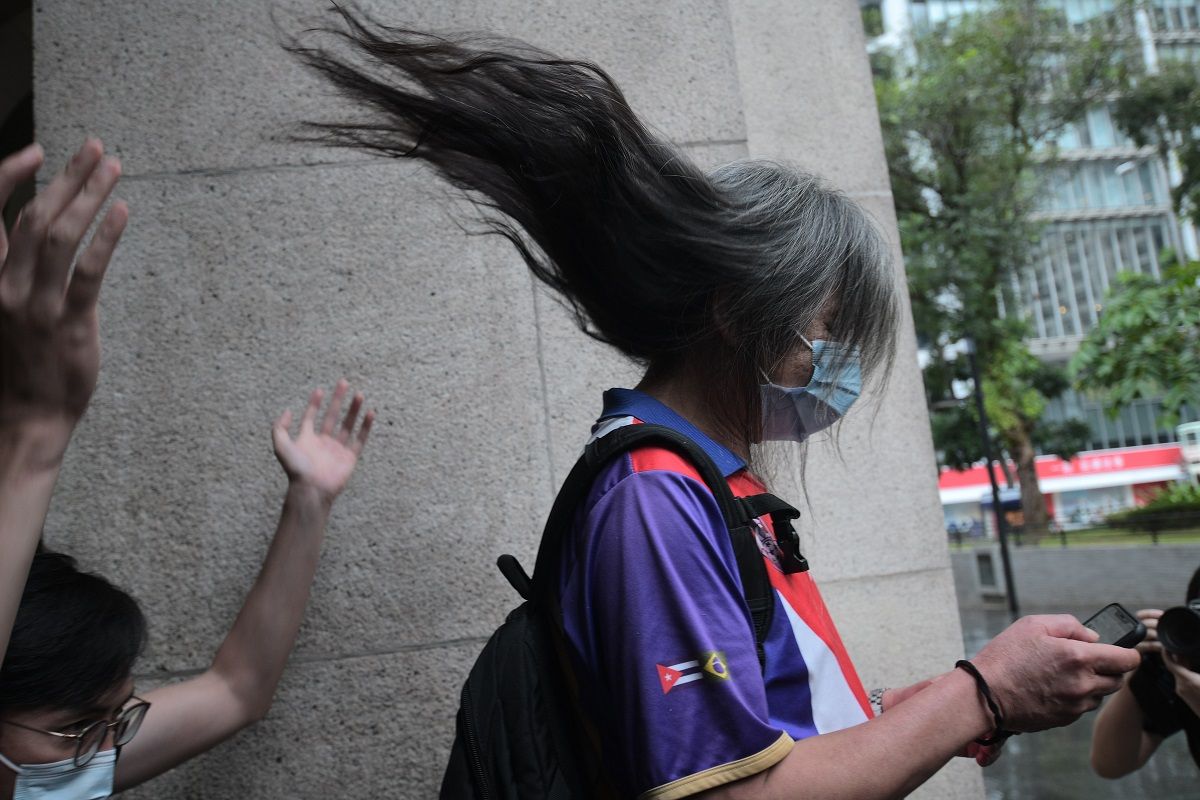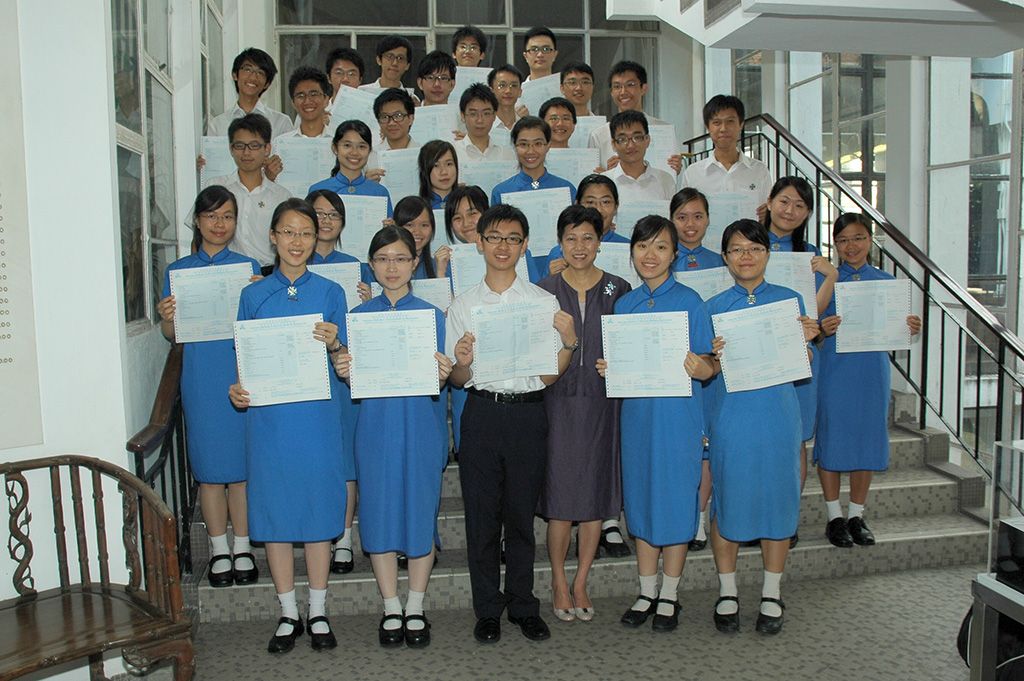Read Leung Kwok-hung v. Commissioner of Correctional Services: Hong Kong school rules requiring male students to cut their hair short may be 'sex discrimination'
"Longhair" Leung Kwok-hung was required to cut his long hair short when he was imprisoned in 2014. He filed a judicial review on the provisions of the Correctional Services Department. The five judges of the Court of Final Appeal recently (November 27, 2020) unanimously ruled that "Longhair" won the case ( Liang Guoxiong v. Commissioner of Correctional Services [2020] HKCFA 37), alleging that the department’s routine order that male prisoners’ hair must be “cut as short as possible” constitutes direct sex discrimination and violates the Sex Discrimination Ordinance.
While reading the CFA decision, I was reminded of the school rules of the old secondary school. My middle school is a co-educational school. The school rules require that boys' hair should not cover their eyebrows, and the ends of their hair should not reach their collars, while girls can have long hair, as long as they are tied with a hair tie. At that time, I thought it was natural for boys to have short hair and girls to have long or short hair. But now, after reading the judgment in the Liang Guoxiong case, I realized that the school rules are likely to constitute gender discrimination.
Before discussing whether the relevant school rules constitute gender discrimination, I will briefly explain the judgment of the Court of Final Appeal.
Court of Final Appeal Judgment
The Court of Final Appeal ruled that the Correctional Services Department’s requirement that male prisoners cut their hair as short as possible while allowing female prisoners to keep long hair constituted direct sex discrimination, contrary to Section 5(1)(a) of the Sex Discrimination Ordinance and was unlawful under Section 38 of the Ordinance . The main point of contention in the case is whether the department can give a reasonable explanation why male prisoners are treated differently than female prisoners.

The Commissioner of Correctional Services explained that the practice is aimed at ensuring prison discipline, so it is necessary to limit prisoners' personal style and require prisoners to be reasonably consistent in appearance. This alignment can be achieved by applying Hong Kong society's established stereotypes of men and women to prisoners.
The interpretation was not accepted by the Court of Final Appeal. The Chief Justice of the Court of Final Appeal, Geoffrey Ma, pointed out that there are two loopholes in the interpretation of the Commissioner of Correctional Services: First, the department failed to provide evidence to prove that in Hong Kong society, the "traditional hairstyle" of men is short hair, while women can have short or long hair. make up. Permanent Judge Fok Siugang also pointed out that in the 1970s, many Hong Kong men would have long hair. In fact, to this day, some men still like to show people with long hair, such as artist Ekin Cheng, district councillor Wong Kwok Tong, lawyer Ah Quan and Uncle Yan of "Good Youth's Poison Room - Philosophy Department".


Second, the department cannot explain how applying socially established stereotypes of men and women can more effectively ensure prison discipline. Would requiring male prisoners to cut their hair to a "predetermined length" outside the prison, if any, would help maintain prison discipline? Are long-haired male prisoners necessarily more rebellious and aggressive than short-haired male prisoners?
The case reflects that the policies of the Correctional Services Department are outdated, filled with stereotypes about gender in the old society, and have not kept pace with the Sex Discrimination Ordinance.
Current school rules may constitute sex discrimination
Going back to the school rules, I think that according to the judgment of Leung Kwok-hung, the practice of requiring boys to cut their hair short but allowing girls to choose between long or short hair in a co-educational school would also violate Section 5(1)(a) of the Sex Discrimination Ordinance. and contravenes section 25(1)(c)(ii) of the Ordinance.
Teacher Fok Zinan of the Educational Work Concern Group has previously written articles on the ruling of the court of first instance, pointing out that the regular orders of the Correctional Services Department cannot be compared with the school rules (article: Is it "sex discrimination" for male students not to have long hair? ). He pointed out that (1) the school rules are different from the law, so the ruling does not apply to the school; (2) the relevant school rules can help students understand "sex discrimination" and have an educational function; (3) short hair is the established hairstyle for boys, and the school needs to play "" The role of "social education" is to teach students the social customs of Hong Kong and help them adapt to the society when they grow up.

I can't agree with Mr. Huo's statement. First of all, in response to point (1), section 25(1)(c)(ii) of the Sex Discrimination Ordinance stipulates that a school shall not discriminate against its students in any way because of their sex. The Ordinance obviously applies to schools, and the school rules cannot be exempted. Male students will be penalized for having too long hair, which will affect the conduct score on the grade sheet, and have the opportunity to stay in class and be expelled from school, while girls will not be subject to the same punishment. This practice "suffers disadvantage" for male students, so section 25(1)(c)(ii) applies.
The logic of point (2) is confusing. Mr. Fok first assumed that the relevant school rules did not constitute gender discrimination, and compared it with the regular order of the Correctional Services Department, which was found to be discriminatory. He pointed out that retaining the relevant school rules has the effect of educating students about "true sex discrimination", so as to prove that the relevant rules are useful. In other words, Mr. Huo made the premise that "the relevant school rules do not constitute sex discrimination" and came to the conclusion that "the relevant school rules do not constitute sex discrimination", which is a fallacy of circular reasoning.
Requiring boys to cut their hair short has no legitimate purpose
Point (3) is the most worthy of discussion. Applying the judgment of the Court of Final Appeal, if the school wants to prove that the inconsistent hair style requirements for male and female students do not constitute a discriminatory treatment of one or the other, according to the principle of "he who asserts, must prove", the school must provide evidence to explain (a) The predetermined hairstyle for men is short hair, and the predetermined hairstyle for women is short or long hair; and (b) Students are required to follow the predetermined hairstyle to achieve the purpose set by the school rules (such as the "social education" function that Mr. Huo refers to) and The purpose must be reasonable.
I think on the issue of (a), schools can choose between the hard and the easy, and change from arguing "the established hairstyles of men and women (not limited to students) in Hong Kong society" to "the established hairstyles of male and female students in Hong Kong". Schools can collect evidence from the school rules of Hong Kong primary and secondary schools in recent decades, showing that short hair has always been the established hairstyle for Hong Kong male students.
However, even if schools can break through the first hurdle, I think it is difficult to argue that the relevant regulations can achieve any reasonable purpose. The Court of Final Appeal rejected the argument that boys cut their hair short to maintain prison discipline, so the school could not justify ensuring school discipline. As for Mr. Fok's argument that requiring boys to cut their hair short has the effect of "social education", it is necessary to prove that there are relevant norms in society, that is, it is inevitable to return to the issue of proving that short hair is the established hairstyle of men (not limited to male students) in Hong Kong society. The above-mentioned Ekin Cheng, Huang Guotong, A Quan, and Uncle Yan are providing counter-examples to refute the relevant claims. Moreover, Mr. Huo pointed out that "social education" is to "help students adapt to society when they grow up in the future." Why is it more difficult for men with long hair to adapt to society? Isn't Kimura Takuya with long hair still fascinated by thousands of girls? Mr. Huo must argue that men with long hair are treated worse in society than boys with short hair. In fact, it is not so much that the school's establishment of relevant regulations is to play the role of "social education", but it is more to say that it is an accomplice to promote gender stereotypes and discrimination.

However, the Northern Ireland Court in 2008 in Re McMillen [2008] NIQB 21 ruled that the requirement for boys to cut their hair short in local schools did not constitute gender discrimination. The judge noted that this provision fosters students' sense of self-discipline and a sense of belonging to the school (The objectives are stated to be… self discipline and a sense of belonging to the school.) (para. 28). In addition, formulating uniform policies can also reduce differences in economic ability among students and peer influence, and create an atmosphere of allegiance, discipline, equality and cohesion where school uniform policy minimises peer pressures that mark differences on grounds of wealth and status.) (paragraph 28).
However, as Chief Justice Ma Daoli pointed out in the judgment of Leung Kwok-hung, the above cases may not achieve the same result in today's Hong Kong (The way that past cases have been dealt with on their facts, provides no sure indication that seemingly similar factual situations will nowadays still produce the same outcome.) (para. 30).
In fact, asking boys to cut their hair has little to do with self-discipline, belonging, or peer influence. Do girls with long hair (or short hair) become less self-disciplined and have no sense of belonging? Allowing girls to freely choose their hair length highlights economic differences among peers? Mr. Huo mentioned that "requiring every student to wear the same uniform and simple appearance can prevent students from dressing up too much before going to school, and the simple appearance of students can also help create a learning environment that is easy to concentrate." He Xie allows female students to have long hair There will be no problems with intentional dressing up and distraction in class, but the long-haired male students are particularly "pretty" and have difficulty concentrating in study? Therefore, I believe that under the judgment of the Court of Final Appeal, the requirement that male and female school students have inconsistent hair would constitute gender discrimination.
I believe that apart from the school rules requiring boys to cut their hair short, other regulations restricting the right to choose a single sex (for example, only female students are allowed to wear earrings) are likely to violate the Sex Discrimination Ordinance . Schools should take this opportunity to review school rules and eliminate prejudice, stereotypes and discrimination on campus so that students can grow up in a freer and more diverse environment.
Like my work? Don't forget to support and clap, let me know that you are with me on the road of creation. Keep this enthusiasm together!

- Author
- More